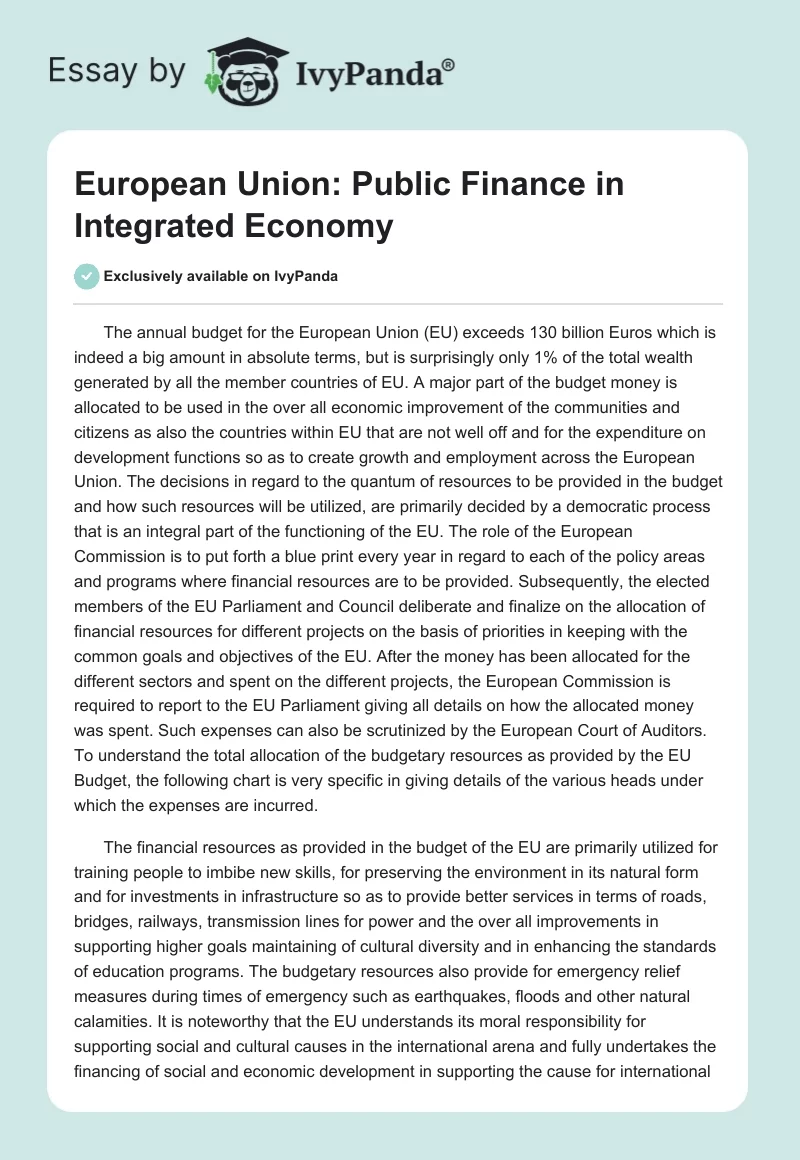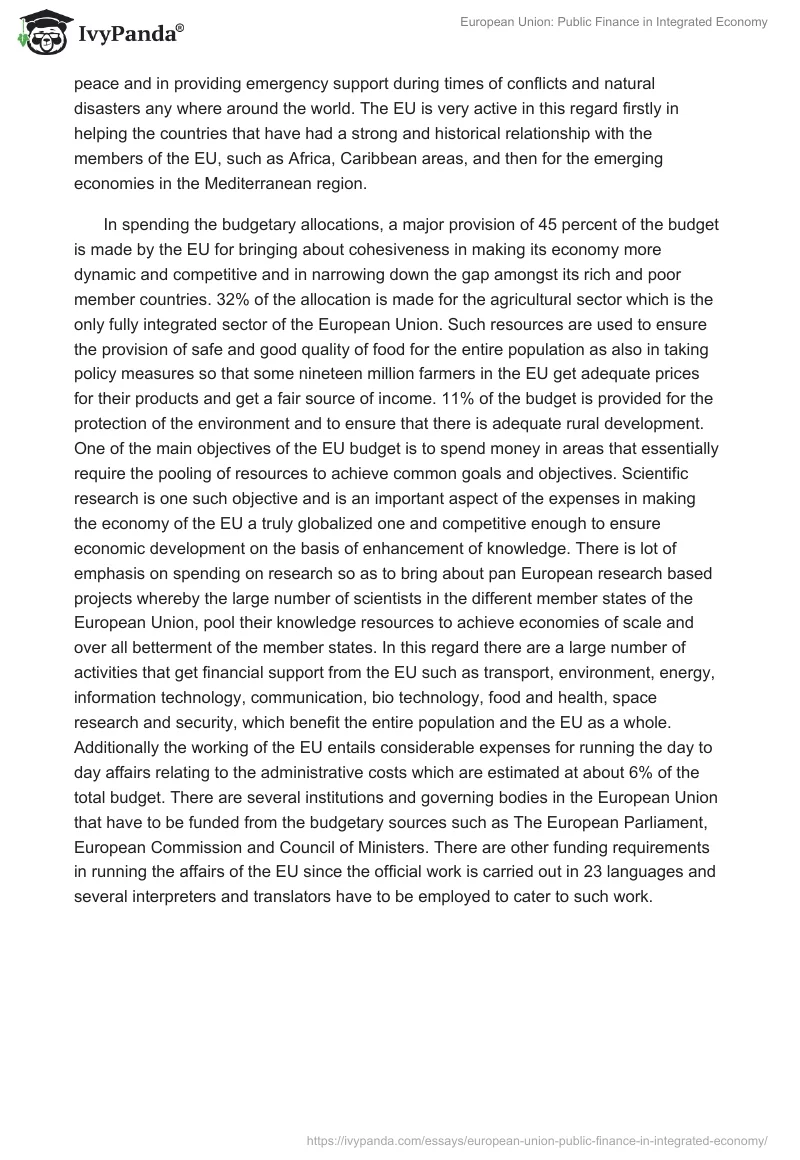The annual budget for the European Union (EU) exceeds 130 billion Euros which is indeed a big amount in absolute terms, but is surprisingly only 1% of the total wealth generated by all the member countries of EU. A major part of the budget money is allocated to be used in the over all economic improvement of the communities and citizens as also the countries within EU that are not well off and for the expenditure on development functions so as to create growth and employment across the European Union. The decisions in regard to the quantum of resources to be provided in the budget and how such resources will be utilized, are primarily decided by a democratic process that is an integral part of the functioning of the EU. The role of the European Commission is to put forth a blue print every year in regard to each of the policy areas and programs where financial resources are to be provided. Subsequently, the elected members of the EU Parliament and Council deliberate and finalize on the allocation of financial resources for different projects on the basis of priorities in keeping with the common goals and objectives of the EU. After the money has been allocated for the different sectors and spent on the different projects, the European Commission is required to report to the EU Parliament giving all details on how the allocated money was spent. Such expenses can also be scrutinized by the European Court of Auditors. To understand the total allocation of the budgetary resources as provided by the EU Budget, the following chart is very specific in giving details of the various heads under which the expenses are incurred.
The financial resources as provided in the budget of the EU are primarily utilized for training people to imbibe new skills, for preserving the environment in its natural form and for investments in infrastructure so as to provide better services in terms of roads, bridges, railways, transmission lines for power and the over all improvements in supporting higher goals maintaining of cultural diversity and in enhancing the standards of education programs. The budgetary resources also provide for emergency relief measures during times of emergency such as earthquakes, floods and other natural calamities. It is noteworthy that the EU understands its moral responsibility for supporting social and cultural causes in the international arena and fully undertakes the financing of social and economic development in supporting the cause for international peace and in providing emergency support during times of conflicts and natural disasters any where around the world. The EU is very active in this regard firstly in helping the countries that have had a strong and historical relationship with the members of the EU, such as Africa, Caribbean areas, and then for the emerging economies in the Mediterranean region.
In spending the budgetary allocations, a major provision of 45 percent of the budget is made by the EU for bringing about cohesiveness in making its economy more dynamic and competitive and in narrowing down the gap amongst its rich and poor member countries. 32% of the allocation is made for the agricultural sector which is the only fully integrated sector of the European Union. Such resources are used to ensure the provision of safe and good quality of food for the entire population as also in taking policy measures so that some nineteen million farmers in the EU get adequate prices for their products and get a fair source of income. 11% of the budget is provided for the protection of the environment and to ensure that there is adequate rural development. One of the main objectives of the EU budget is to spend money in areas that essentially require the pooling of resources to achieve common goals and objectives. Scientific research is one such objective and is an important aspect of the expenses in making the economy of the EU a truly globalized one and competitive enough to ensure economic development on the basis of enhancement of knowledge. There is lot of emphasis on spending on research so as to bring about pan European research based projects whereby the large number of scientists in the different member states of the European Union, pool their knowledge resources to achieve economies of scale and over all betterment of the member states. In this regard there are a large number of activities that get financial support from the EU such as transport, environment, energy, information technology, communication, bio technology, food and health, space research and security, which benefit the entire population and the EU as a whole. Additionally the working of the EU entails considerable expenses for running the day to day affairs relating to the administrative costs which are estimated at about 6% of the total budget. There are several institutions and governing bodies in the European Union that have to be funded from the budgetary sources such as The European Parliament, European Commission and Council of Ministers. There are other funding requirements in running the affairs of the EU since the official work is carried out in 23 languages and several interpreters and translators have to be employed to cater to such work.


